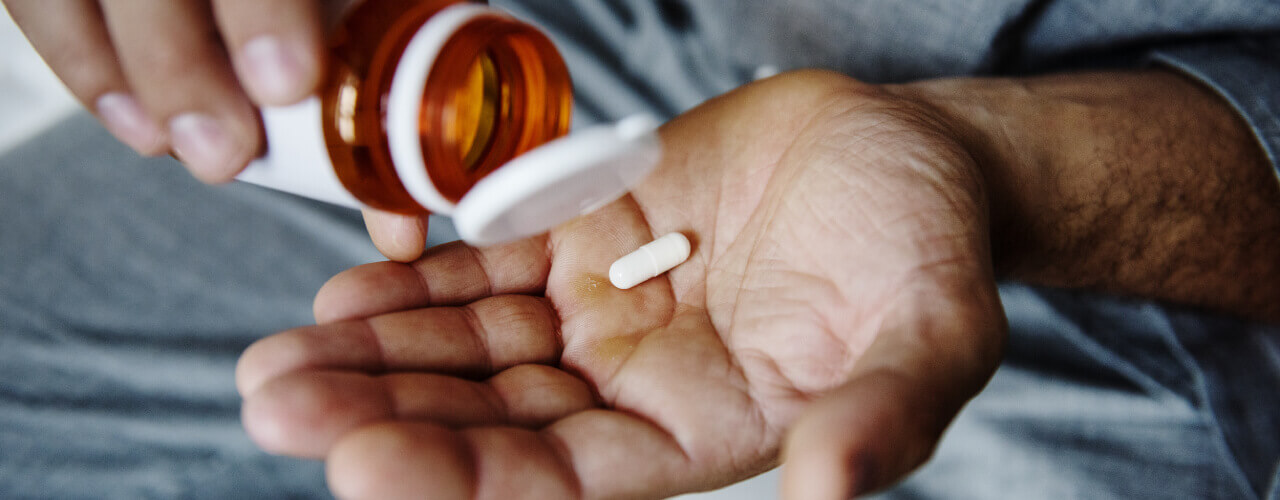Physical Therapy Can Help You Find Long-Lasting Relief!
Our bodies are incredible machines – not only do they have the ability to heal and repair themselves, but they can also adapt to almost any situation. This includes the types of things that we put into them, such as medication.
Taking medication to control your pain as you recover from an injury or surgery may be a viable part of your treatment plan; however, taking these drugs on a regular basis, over a long period of time, can create dependence and fail to address the underlying problem.
Fortunately, physical therapy can reduce dependence on pain medication while also restoring body function. To find out how a physical therapist can help, call our office today.
What can physical therapy do for pain relief?
As stated by the APTA website, “The White House has announced that APTA is among the organizations that have joined a public-private partnership to combat opioid usage and prescription drug abuse, and that the association will reach out to the public and its members to deliver the message that pain can be effectively managed through conservative, non drug approaches.
Physical therapists can help individuals manage pain, and greater use of physical therapy could make a real impact on the tragic levels of drug abuse in this country—abuse that often begins with a prescription for pain medication.”
Irrespective of the source of the pain, prescription painkillers fail to address the structural problems at the root of your discomfort. Physical therapy is the process by which you regain the ability to move. As this happens, you experience less pain and will need fewer prescription pain medications to find the same amount of relief.
Your physical therapist will begin your treatments by learning your complete medical history, including the amount of painkillers you are currently taking. Then they will evaluate the function and movement of your body. Once the areas that require physical therapy have been identified, your physical therapist will develop a treatment plan to help restore your mobility, flexibility, and strength.
During your physical therapy experience, you will be given non-drug pain relief methods, such as ice, heat, electrical stimulation, massage, ultrasound therapy, and more. Your physical therapist may prescribe specific stretches to be done at home or at work, along with strengthening exercises to be incorporated into your day. The better you adhere to your treatment plan, the more your body adapts to these treatments, and the better the result will be.
What’s the difference between dependency and addiction?
Often we interchangeably throw around the words “dependency” and “addiction.” However, these words actually refer to two very different processes in the body. Remember how your body has an incredible ability to adapt to almost any situation?
As your brain is flooded with synthetic opioids, it adapts to make opioid levels readily available. Your body produces less opioid on its own, while your brain begins to depend on high levels of the drug for relief.
When this occurs, you will soon need higher and higher doses of the painkiller to receive the same benefit. The body will also start to feel more pain as the underlying problem worsens. Addiction refers to the compulsion to use a drug in spite of its negative effects.
The science behind pain medications
There are two basic types of pain medications – non-steroidal anti-inflammatory drugs (NSAIDs) and analgesics. While NSAIDs are designed to reduce inflammation in a particular part of the body, thereby reducing pain, analgesics (including opioids) work by blocking pain receptors in the brain.
Whenever you get hurt, your body produces natural opioids. They travel to the brain where they join opioid receptors to reduce pain levels across the body. When you take prescription opioids, the brain is flooded with these chemicals that quickly bind to the opioid receptors and keep pain signals from reaching your brain.
This is a great short-term solution immediately after surgery when pain levels are high and physical activity levels intentionally low. There is, however, a risk of dependence even in short-term courses of medication use.
Get started with physical therapy today
If you are ready to say goodbye to your relationship with pain medication, please call our office today to schedule your free consultation. Our physical therapists are ready to get you back on your feet and living a pain free life!


